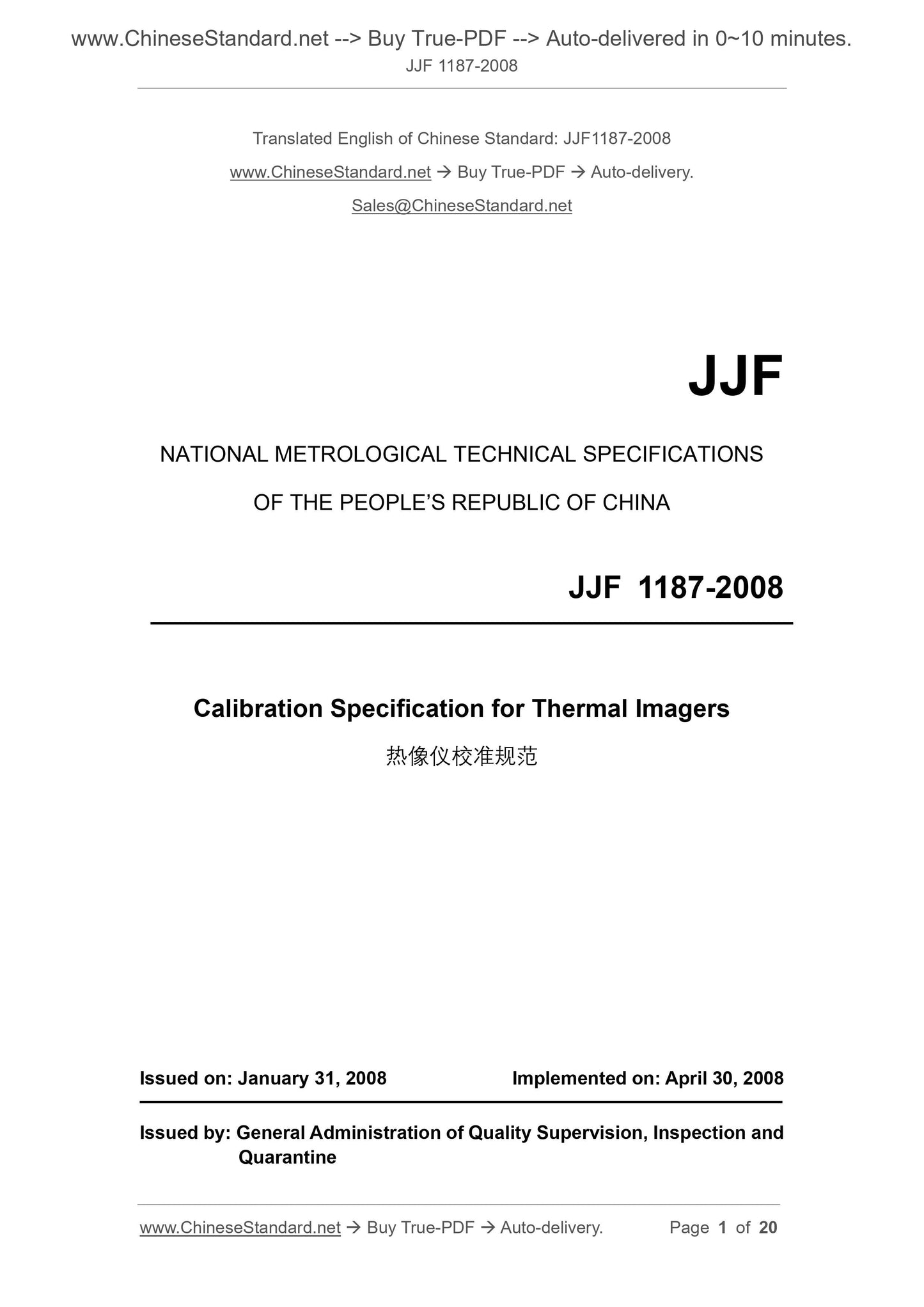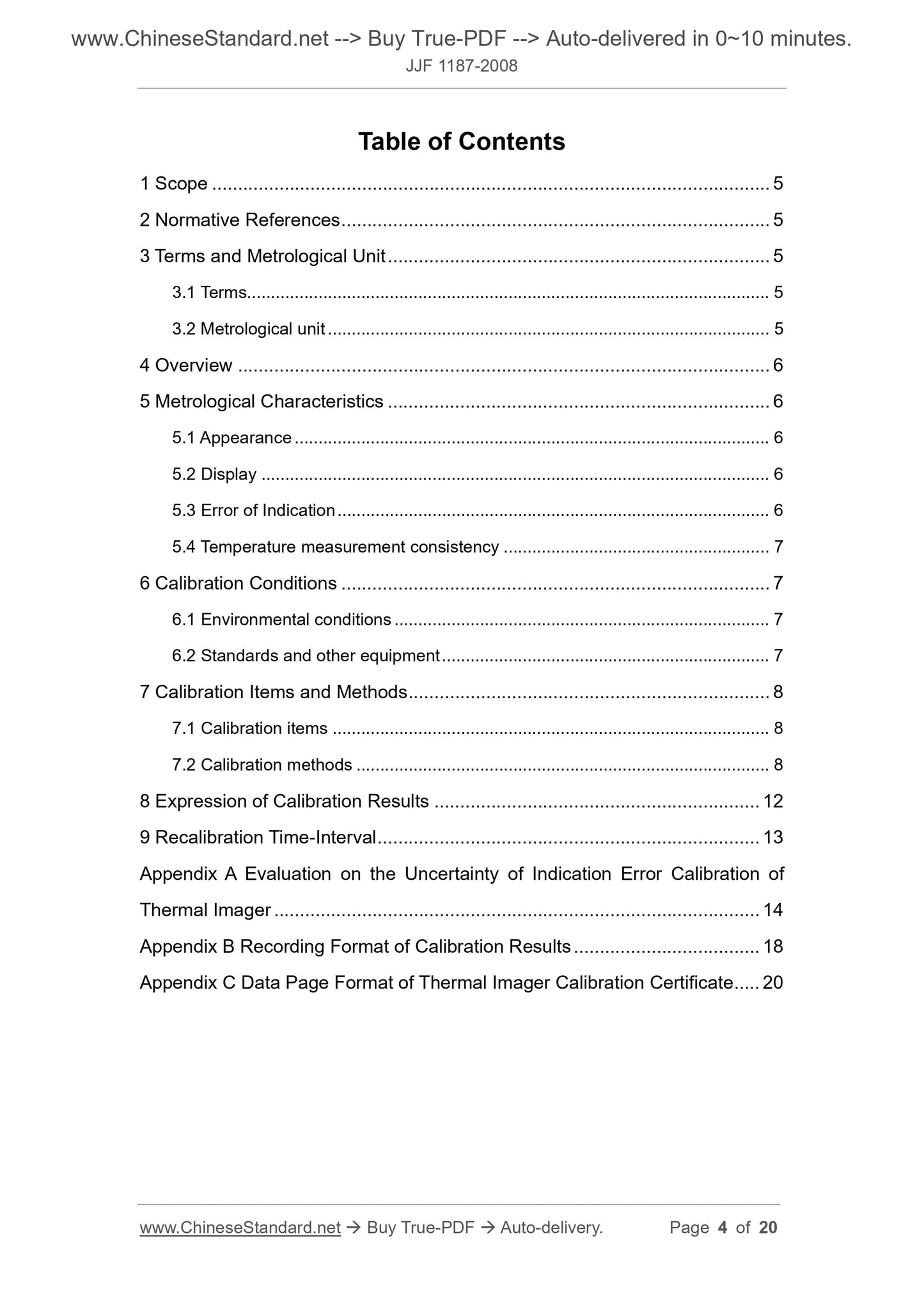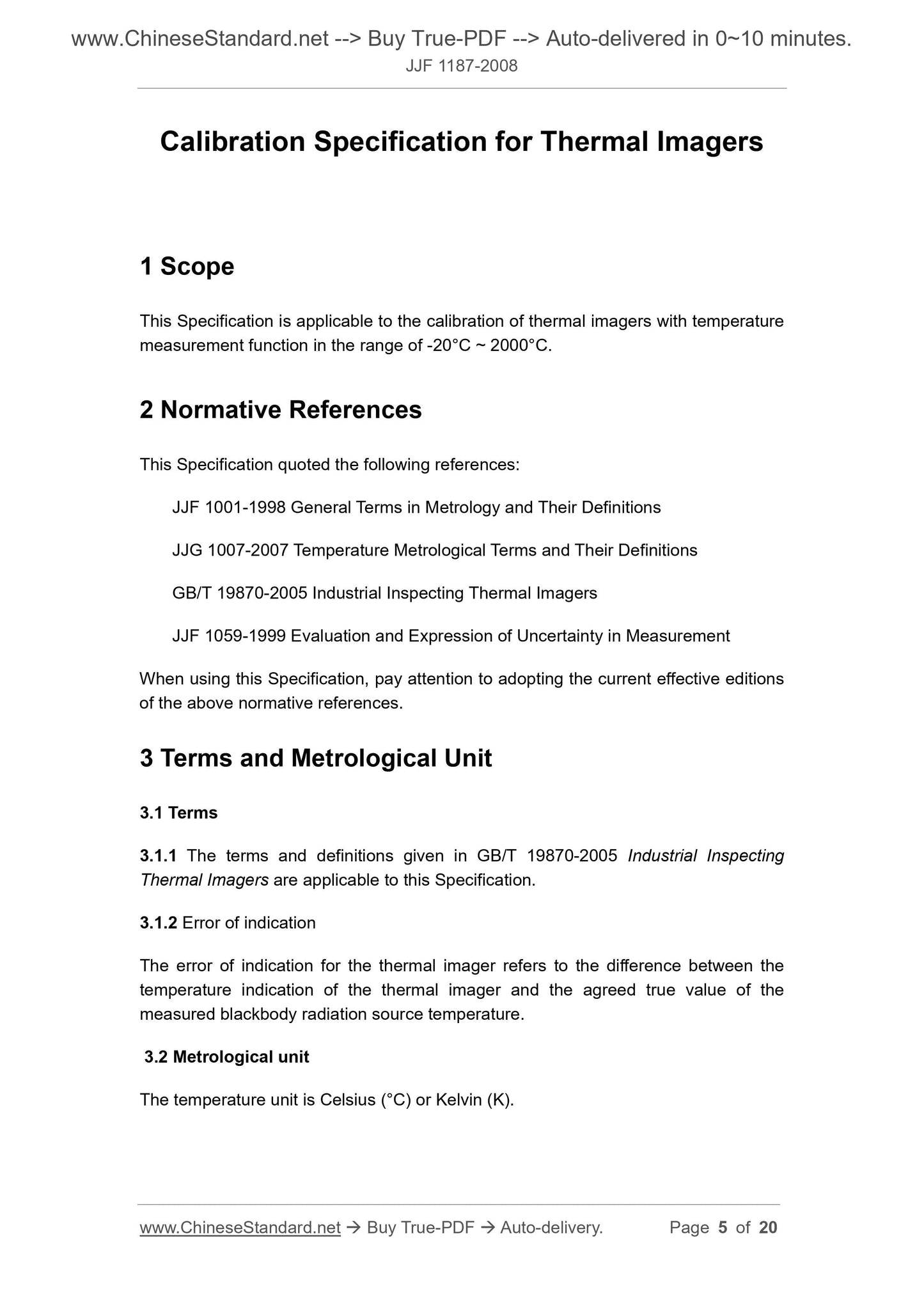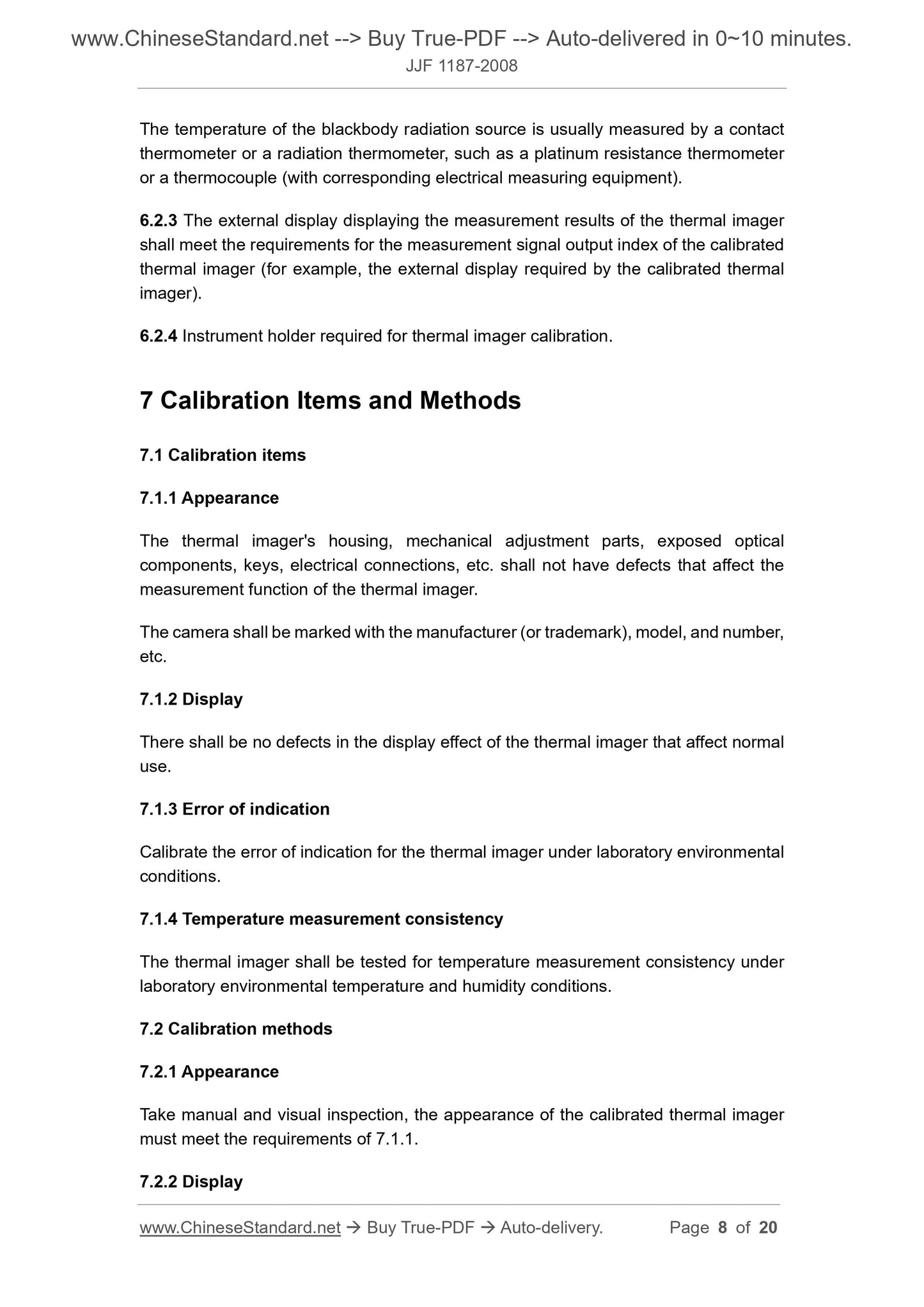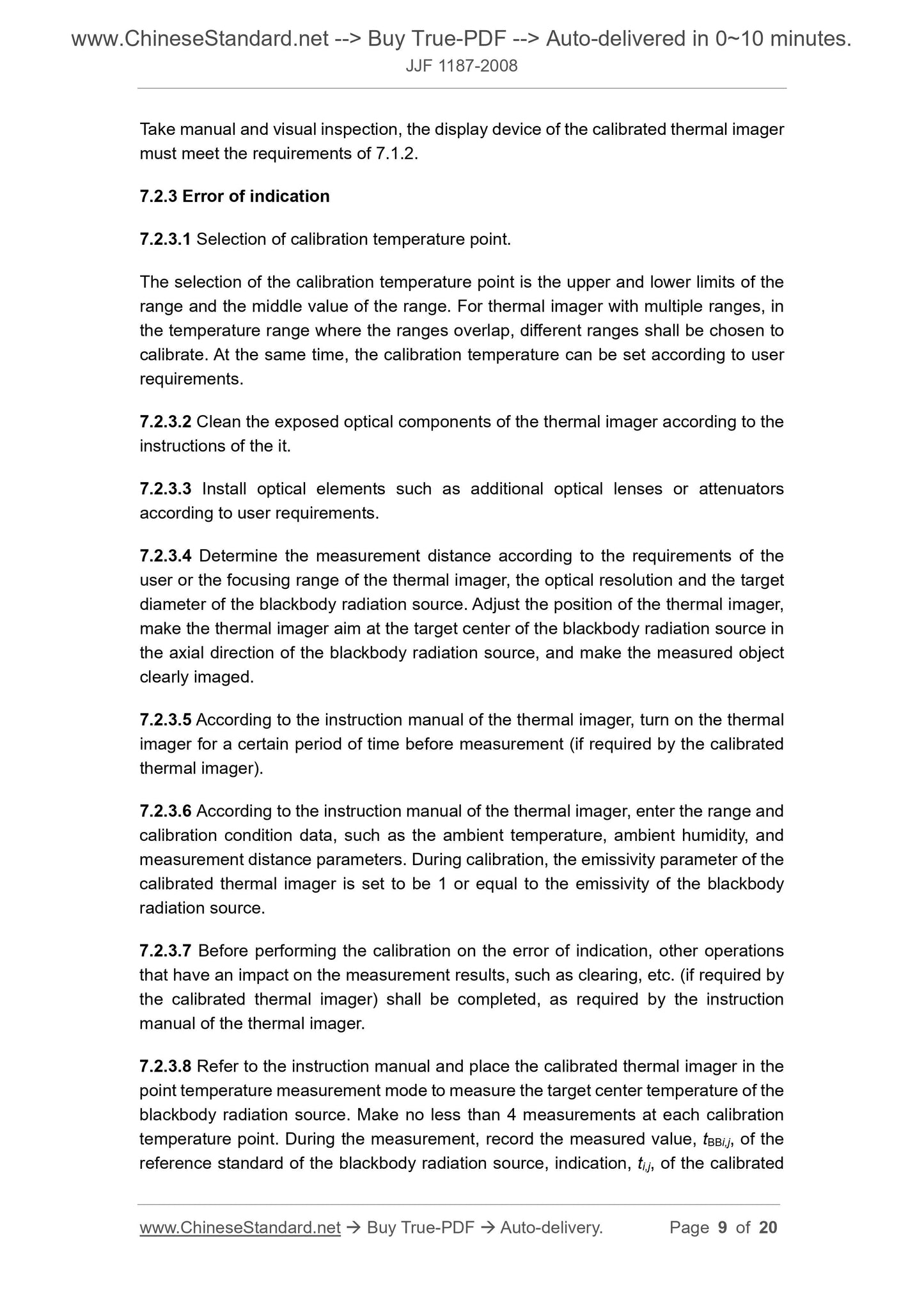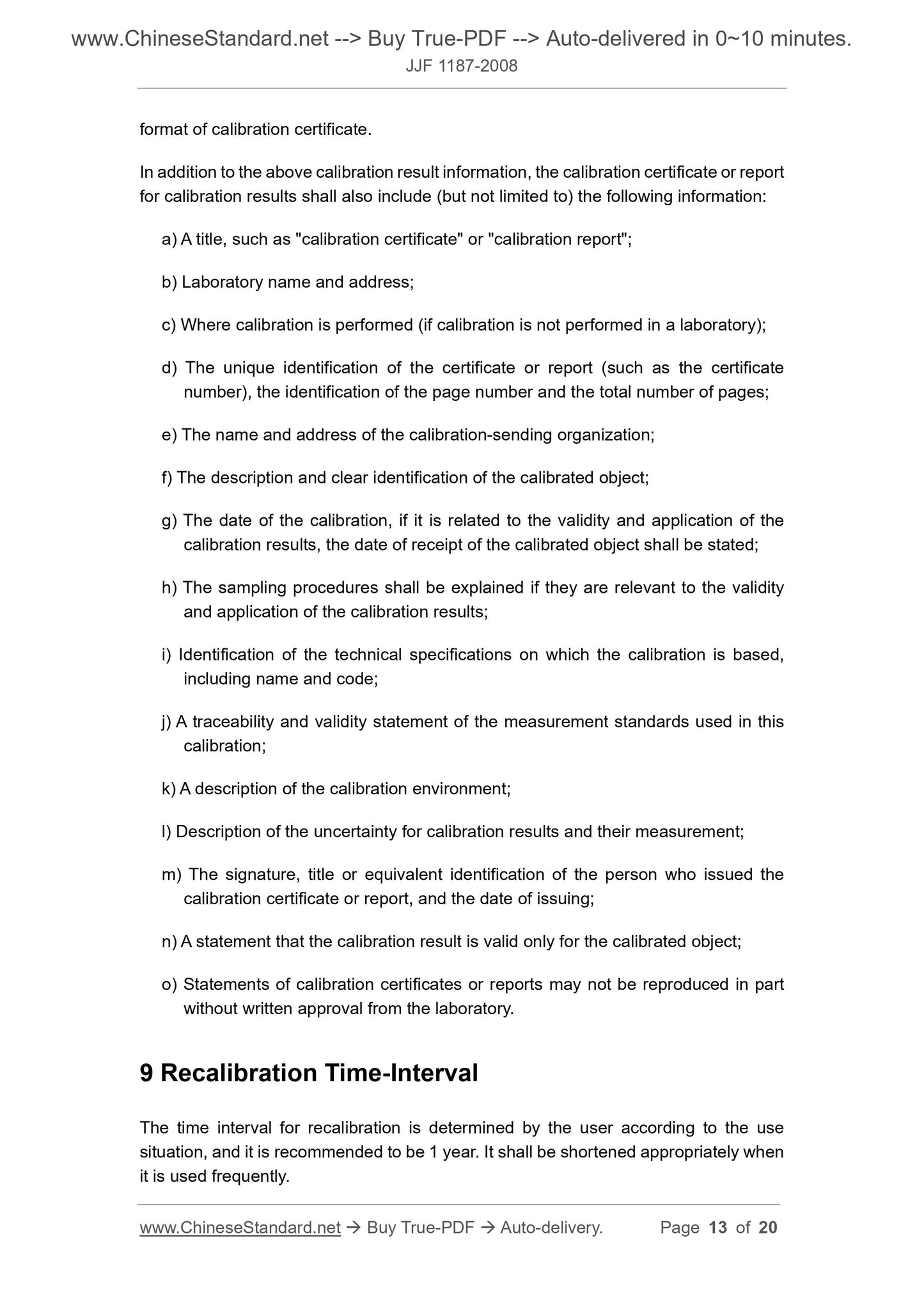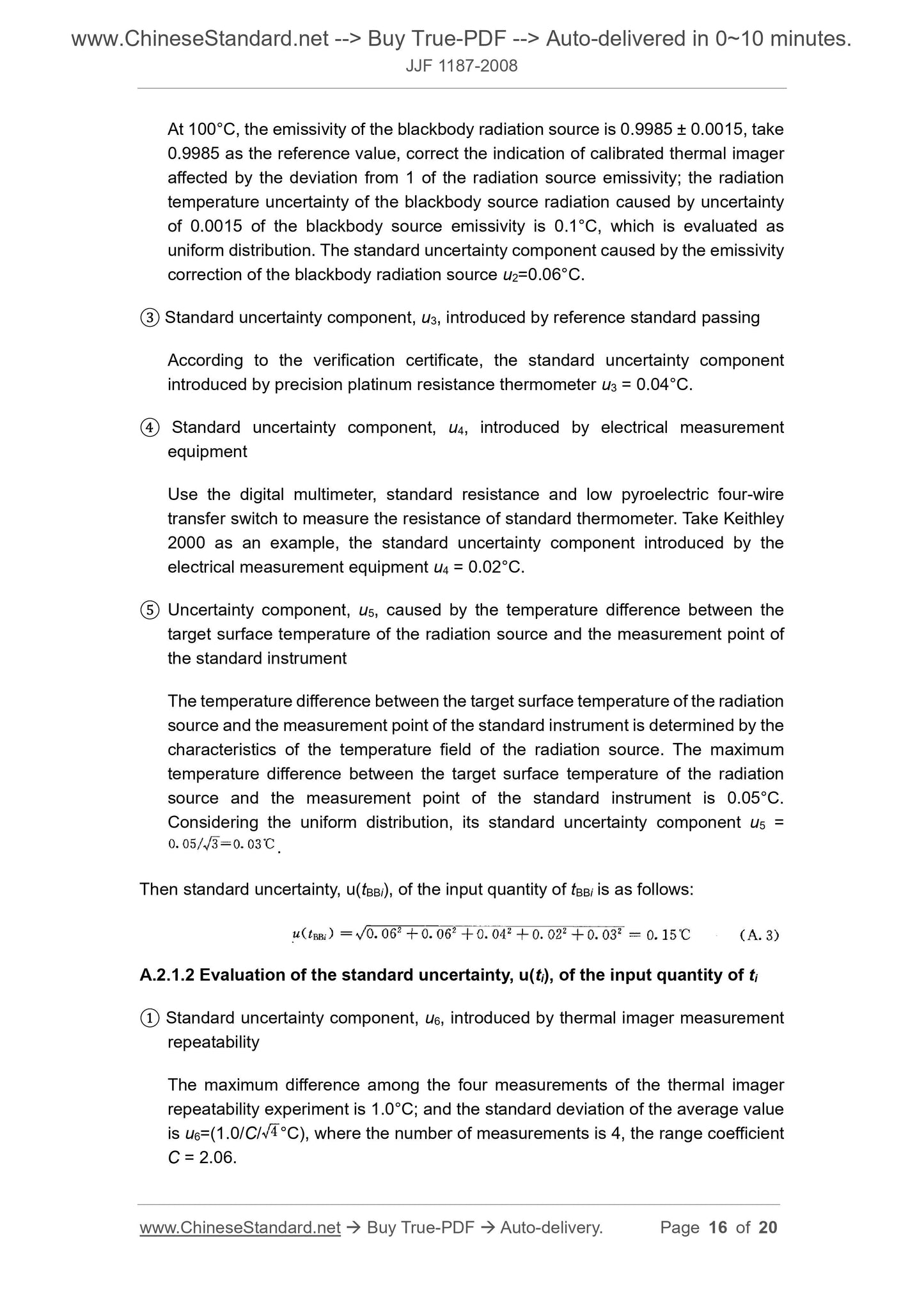1
/
of
7
www.ChineseStandard.us -- Field Test Asia Pte. Ltd.
JJF 1187-2008 English PDF
JJF 1187-2008 English PDF
Regular price
$190.00
Regular price
Sale price
$190.00
Unit price
/
per
Shipping calculated at checkout.
Couldn't load pickup availability
JJF 1187-2008: Calibration Specification for Thermal Imagers
Delivery: 9 seconds. Download (and Email) true-PDF + Invoice.Get Quotation: Click JJF 1187-2008 (Self-service in 1-minute)
Newer / historical versions: JJF 1187-2008
Preview True-PDF
Scope
This Specification is applicable to the calibration of thermal imagers with temperaturemeasurement function in the range of -20°C ~ 2000°C.
Basic Data
| Standard ID | JJF 1187-2008 (JJF1187-2008) |
| Description (Translated English) | Calibration Specification for Thermal Imagers |
| Sector / Industry | Metrology and Measurement Industry Standard |
| Classification of Chinese Standard | A54 |
| Classification of International Standard | 17.200.20 |
| Word Count Estimation | 15,151 |
| Date of Issue | 2008-01-31 |
| Date of Implementation | 2008-04-30 |
| Quoted Standard | JJF 1001-1998; JJG 1007-2007; GB/T 19870-2005; JJF 1059-1999 |
| Regulation (derived from) | AQSIQ Announcement No. 22 of 2008 |
| Issuing agency(ies) | General Administration of Quality Supervision, Inspection and Quarantine |
| Summary | This standard applies to motor vehicle steering wheel power steering angle detector (hereinafter referred to as the steering wheel power angle meter) calibration. This standard specifies the angle of the steering wheel force measuring instrument characteristics and calibration methods. |
Share
